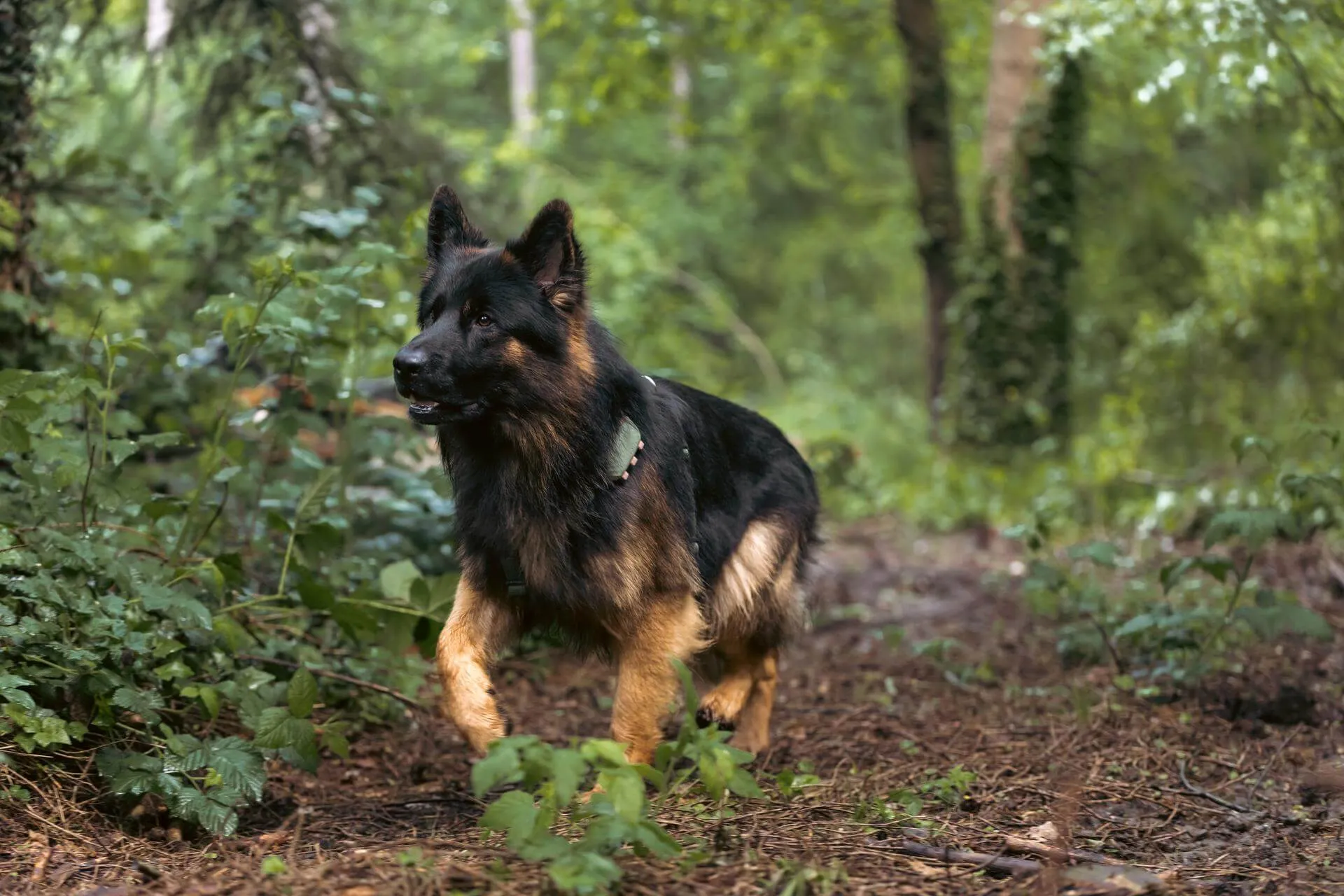For many dog owners, the dream of seeing their canine companion roam freely, exploring without the confines of a leash, is a powerful one. While the freedom of off-leash adventures can be incredibly rewarding for both dog and owner, it’s a privilege that comes with significant responsibility and requires thorough preparation. Learning to Train Your Dog To Walk Off Leash is not just about letting them run; it’s about building a strong bond of trust, ensuring their safety, and respecting your surroundings. This guide will walk you through the essential steps, considerations, and safety measures needed to achieve reliable off-leash control, making your outdoor excursions enjoyable and secure for everyone involved. Mastering this skill enhances your dog’s quality of life and strengthens your connection, but it demands patience, consistency, and a deep understanding of your dog’s temperament and capabilities.
Key Takeaways for Successful Off-Leash Training
Achieving successful off-leash dog training hinges on your dog’s mastery of basic obedience, reliable recall, and strong impulse control. It is crucial to ensure your dog is genuinely ready for this level of freedom, and always verify local leash laws before venturing out. Off-leash activities inherently carry risks, including your dog potentially running away, encountering unforeseen hazards, or causing accidents with other people or animals. In emergency situations where your dog bolts, remaining calm, avoiding the urge to chase, and using positive reinforcement like treats to entice their return are vital. For enhanced safety during off-leash excursions, consider using a smart dog tracker equipped with real-time GPS tracking.
Understanding Off-Leash Dog Training
Off-leash dog training refers to the process of preparing your dog to safely navigate environments without a physical tether. This applies to various outdoor settings such as walks, hikes, camping trips, nature parks, or any other unfenced area where you might unclip them. It’s important to understand that off-leash training is distinct from, though built upon, basic obedience skills. While foundational commands are indispensable, off-leash training elevates these skills to a level where your dog consistently responds to your voice commands despite distractions and distance, ensuring their safety and the safety of others.
Ideal Breeds for Off-Leash Adventures
Certain dog breeds are naturally more predisposed to excelling in off-leash activities due to their inherent trainability and temperament. Breeds historically developed for hunting, like Retrievers and Spaniels, often exhibit high intelligence and eagerness to please, making them exceptionally trainable. These traits contribute to excellent recall and focus, which are critical for off-leash reliability. Potential off-leash companions often include Border Collies, Labrador Retrievers, Golden Retrievers, Australian Shepherds, and German Shorthaired Pointers. Their strong desire to work with humans and typically lower prey drive (compared to some other breeds) make them good candidates.
Conversely, dogs with an exceptionally strong prey drive—such as Siberian Huskies, Shiba Inus, Rhodesian Ridgebacks, or Coonhounds—may present significant challenges for off-leash training. Their instinct to chase can override even the most consistent training, making it difficult to maintain control when distractions arise. Similarly, dogs with aggressive tendencies or significant anxiety may not possess the suitable disposition for safe off-leash freedom. While training can always be attempted, be aware that certain breed characteristics or individual personalities might require more intensive effort, or it might be safer to keep some dogs leashed. It’s important to remember that every dog is an individual, and training should be tailored to their specific needs and personality, rather than solely relying on breed generalizations. If you are looking to effectively train your dog to walk off leash, understanding their breed tendencies can provide a valuable starting point.
Is Your Dog Ready to Walk Off Leash?
Before embarking on off-leash training, a thorough assessment of your dog’s readiness is crucial. This isn’t just about their obedience, but also their temperament and health. Ask yourself the following questions:
- Does your dog consistently respond to basic obedience commands? This includes commands like “Sit,” “Stay,” and “Come.”
- Do they have a reliable recall? Can you call your dog back to you reliably, even with moderate distractions?
- Does your dog exhibit good impulse control? For example, can they resist the urge to chase a squirrel or greet another dog without permission?
- How do they interact with strangers, other dogs, and small children? A well-socialized dog is less likely to cause issues in public off-leash areas.
- Is your dog microchipped and wearing an ID tag? These are critical safety measures in case they do get lost.
- Are their vaccinations and flea/tick prevention up to date? Off-leash activities expose them to more potential health risks.
- Are you fully familiar with the leash laws in your specific area? Ignorance of laws can lead to fines or incidents.
- Is your dog spayed or neutered? The strong mating instinct in intact dogs can lead them to run off if they detect a female in heat.
If you can confidently and enthusiastically answer “YES!” to all these questions, you and your dog are likely well-prepared to begin the journey of off-leash training. If there are any “no” answers, it indicates areas that require more training or attention before progressing.
Potential Risks of Off-Leash Walking
Even the most well-trained dog can be unpredictable in an off-leash environment. If your dog has a history of running off due to a strong prey drive, incomplete obedience training, or even simple boredom, taking them off-leash significantly increases the likelihood of them going missing. A sudden loud noise, an unfamiliar scent, or an unexpected encounter can spook your dog, causing them to bolt. Without a physical leash, your voice commands are your only means of control, and these can be ineffective if your dog is far away or highly distracted.
Beyond simply running away, an off-leash dog faces numerous hazards. They could be hit by a car, get into altercations with other dogs or wildlife, become lost in unfamiliar territory, or ingest something toxic. Furthermore, a loose dog poses risks to others. They might initiate a fight with another dog, inadvertently bite a person, or dart into the path of a cyclist or pedestrian, causing an accident. It’s also important to remember that many people are afraid of dogs, and even a friendly, enthusiastic pup running towards them can be distressing.
Navigating Local Leash Laws
Understanding and adhering to local leash laws is paramount for responsible dog ownership, especially when considering off-leash activities. These laws vary significantly not only from state to state but also between cities, towns, and even specific parks or natural areas. Many jurisdictions have statutes prohibiting dogs from roaming off-leash, while others might require dogs to be “under control” – meaning they don’t necessarily need a leash but must respond immediately to voice commands. For instance, some city parks might strictly mandate leashes no longer than six feet. Violators of these ordinances can face hefty fines.
Moreover, if you plan to travel with your dog, you must research the leash laws of your destination country or region. Some nations have blanket bans on off-leash dogs, while others might require both a leash and a muzzle in public spaces or on public transport. The fundamental rule is to always know the specific leash laws of your current location and any place you intend to visit with your furry companion. Failing to do so can lead to legal troubles, fines, and even the impounding of your dog.
Step-by-Step Guide to Off-Leash Dog Training
Training your dog to walk off leash is a gradual process that builds on foundational skills and requires patience and consistency.
Master Basic Obedience Commands First
Before you even think about removing the leash, your dog must demonstrate absolute proficiency in basic obedience commands. These commands are their lifeline and your primary means of control in unpredictable situations, potentially saving them from hazards like wild animals, dangerous substances, or thin ice. Essential commands include:
- Sit: Your dog stops and sits, looking at you for further instruction.
- Stay: Your dog remains in a designated spot, regardless of surrounding distractions.
- Down: Your dog lies down calmly at your feet.
- Go: Your dog moves to a specific place, such as their bed or crate.
- Heel: Your dog walks precisely beside you, not pulling ahead or lagging behind.
- Recall: Your dog immediately comes back to you when called, every single time.
- Look: Your dog makes eye contact with you, ensuring their attention is on you.
- Drop It: Your dog releases an object from their mouth.
- Leave It: Your dog walks away from an object or chooses not to chase something.
You can teach these behaviors using various methods, including clear voice commands, consistent hand signals, or even a clicker. Always reward your dog with high-value treats and enthusiastic praise to solidify the learning process. Incorporate short, focused 10-minute training sessions into their daily routine to keep these skills sharp. If you encounter difficulties, consider consulting a professional dog trainer or utilizing online training resources. Do not proceed to off-leash training until your dog has mastered these basic obedience commands. Your role is to be a calm, patient, and assertive leader, maintaining control and being ready to intervene if unexpected events occur.
Leverage Treats for Motivation
Treats are an incredibly powerful motivational tool in dog training, especially when working on off-leash commands. Always carry a supply of high-value treats on your off-leash outings. If your dog is nearby and you need their immediate attention, simply holding a few treats visibly in your hand can effectively redirect their focus. For situations where your pup is further away, the distinct sound of a crinkling treat bag can be an excellent auditory cue, signaling that rewards are available and encouraging them to return to you. This positive association helps reinforce recall and maintains their engagement during training sessions.
Introduce a Long Leash Gradually
Before committing to a fully off-leash experience, it’s wise to bridge the gap with a long training leash or a retractable leash (used cautiously). Attach this longer leash to your dog’s harness and venture outdoors into a controlled, safe environment. This allows your dog to experience a taste of freedom while still giving you the ability to intervene if necessary. As your dog explores, consistently use your basic commands—”Heel,” “Recall,” or “Look”—to practice controlling them from a distance. Repeat these exercises frequently throughout your walks, always having treats readily available to reward compliance. After several outings with the long leash, honestly assess your dog’s responsiveness. If they are still too engrossed in exploration to acknowledge your commands, more practice with the long leash is needed before attempting full off-leash freedom. Consistent practice on a long leash can also significantly help if you are still working on how to get dog not to pull on lead.
Practice Off-Leash in Safe, Fenced Areas
Once your dog demonstrates reliable behavior on a long leash, the next step is to practice going fully off-leash in a secure, enclosed environment. Your backyard or a designated fenced dog park are ideal locations. Unclip the leash, remain confident and assertive in your demeanor, and issue commands frequently. Lavish your dog with praise and treats every time they obey.
Repeat this exercise on subsequent days, progressively introducing distractions. Invite family members or friends to join, or choose a time at the dog park when there are a few other dogs present. Continue to focus on issuing commands and pay close attention to your dog’s responses. If these sessions go well over a few days, demonstrating consistent obedience amidst mild distractions, your dog may be ready for the real thing – short, controlled off-leash excursions in appropriate public areas.
Teach Emergency Commands
In addition to regular check-ins and basic commands, it’s vital to practice “emergency” commands such as “Sit” and “Down.” These commands should be practiced when your dog is both nearby and at a distance. For example, if you see a horse and rider approaching on a trail, recall your dog immediately or command them to “Sit” and “Stay” until the horse has passed, or you can reach your dog’s side. It’s crucial to never chase after your dog if they run off; this can often make them think it’s a game, causing them to run faster or further away. Instead, rely on your recall and emergency commands. This disciplined approach ensures safety and reinforces your dog’s training. Establishing consistent routines, like having dedicated spots for relief, can also support their overall discipline and responsiveness, much like getting your dog to pee outside requires consistent training and cues.
What to Do if Your Dog Runs Away
Despite all the training, no amount of preparation can offer a 100% guarantee that your off-leash dog won’t run away. If this happens, your immediate actions are critical:
- Stay Calm: Panic can be perceived by your dog. Maintain a calm, assertive tone when calling your pup. Avoid sounding angry or fearful, as this can make them more hesitant to return.
- Don’t Chase: Chasing your dog often backfires, making them think you’re playing a game, which encourages them to run faster and further. You will rarely outrun your dog. Your best strategy is to rely on their training to come back to you.
- Use Treats: If your dog is within sight, try showing them treats from your pocket or rustling the bag. This can often grab their attention and provide motivation to return.
- Turn Away: Sometimes, walking in the opposite direction while calling your dog’s name can pique their curiosity, causing them to trot over to see what you’re doing.
Enhance Safety with a Smart GPS Dog Tracker
Even the most impeccably behaved dogs can surprise us. One moment they’re by your side, and the next they’ve caught an irresistible scent, been startled by an unexpected noise, or spotted a squirrel with Olympic-level speed, and then—poof—they’re gone. This is precisely where a smart dog tracker with real-time GPS tracking can transform a heart-stopping moment into a simple “Oops, there they are!”
![]() Brown dog wearing Tractive GPS dog tracker collar, app screenshot showing live tracking for dogs
Brown dog wearing Tractive GPS dog tracker collar, app screenshot showing live tracking for dogs
When strapped to your dog’s collar, a reliable GPS device offers invaluable peace of mind. For instance, a Tractive device can help you:
Pinpoint Your Dog’s Location in Real-Time: With LIVE tracking, their real-time position updates every few seconds on your phone. If they decide to take an unexpected detour, you’ll be aware of their every move. Unlike an AirTag, these trackers are not limited by network range or the presence of compatible devices, offering true freedom.
Receive Escape Alerts: Through the app, you can establish “safe zones” around your yard or designated areas in a park. If your dog crosses these invisible boundaries, you’ll receive an instant escape alert, giving you a crucial head start to call them back before they wander too far.
 Safe Zone notification screenshot
Safe Zone notification screenshot No-Go Zone notification screenshot
No-Go Zone notification screenshotDiscover Their Favorite Haunts: A Heat Map and Location History feature records your dog’s past adventures. In an emergency, such as if they go missing, you’ll have valuable insights into their preferred spots, guiding your search efforts.
Enjoy Outdoor Activities Stress-Free: Many trackers are durable and 100% waterproof, making them suitable for muddy puddles, unexpected downpours, and whatever other adventures your furry explorer encounters. This allows you to confidently hike, run, or swim with your dog, knowing their safety is enhanced. This peace of mind is especially beneficial for active dogs and owners who enjoy activities like learning how to teach your dog to jog with you.
 Black dog in forest
Black dog in forest
With a combination of time, patience, consistent basic commands, and plenty of positive reinforcement, you’ll be much closer to confidently letting your dog enjoy off-leash freedom. This journey not only builds invaluable trust but also enriches your shared outdoor adventures. Remember to always double-check local leash laws, begin training slowly, and gradually introduce your dog to quiet public spaces. By adhering to these guidelines, you’ll be well-equipped to master off-leash dog training and create lasting memories with your well-behaved companion.

 Safe Zone notification screenshot
Safe Zone notification screenshot No-Go Zone notification screenshot
No-Go Zone notification screenshot Black dog in forest
Black dog in forest